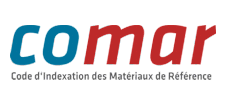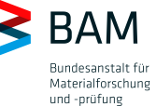Reference Materials
Reference Materials
| Producer | RM Code | Name | Item | Trust | Updated | |
|---|---|---|---|---|---|---|
| 1 | ECCC | WQB-5 | WQB-5 lot 1122 | Trace Elements in Sediment Sample | 22-09-2023 | |
|
Properties:
Antimony* 1.09 ug/g Arsenic* 17.9 ug/g Barium* 179 ug/g Cadmium* 2.31 ug/g Calcium* 2.31 % Iron* 3.79 % Lead* 103 ug/g Magnesium* 1.12 % Manganese* 1408 ug/g Mercury* 2.8 ug/g Molybdenum* 1.14 ug/g Nickel* 61.8 ug/g Selenium* 1.3 ug/g Silver* 1.19 ug/g Sodium* 252 ug/g Strontium* 44.4 ug/g Thallium* 0.507 ug/g Tin* 6.29 ug/g Uranium* 0.938 ug/g Vanadium* 40.6 ug/g *indicative |
Remarks: Intended Use: CRM Certificate: WQB-5 lot 1122.pdf |
|||||
|
Producer: (click for contact & purchase details) This material is produced under a valid ISO 17034 accreditation |
||||||
|
Public link to this factsheet: www.comar.bam.de/rm/499478 |
||||||
| 2 | ECCC | WQB-4 | WQB-4 lot 1123 | Lake Ontario Sediment Sample | 08-11-2023 | |
|
Properties:
Arsenic* 16 ug/g Barium* 125 ug/g Cadmium* 3.69 ug/g Calcium %* 4.16 % Chromium* 79.8 ug/g Copper* 76.5 ug/g Lead* 230 ug/g Magnesium %* 1.17 % Manganese* 1129 ug/g Mercury* 2.82 ug/g Molybdenum* 1.65 ug/g Nickel* 48.7 ug/g Selenium* 1.44 ug/g Silver* 1.51 ug/g Strontium* 68 ug/g Vanadium* 35.6 ug/g *indicative |
Remarks: Intended Use: CRM Certificate: WQB-4 lot 1123.pdf |
|||||
|
Producer: (click for contact & purchase details) This material is produced under a valid ISO 17034 accreditation |
||||||
|
Public link to this factsheet: www.comar.bam.de/rm/499477 |
||||||
| 3 | ECCC | WQB-3 | WQB-3 lot 1123 | Lake Ontario Sediment Sample | 08-11-2023 | |
|
Properties:
Aluminum* 1.46 % Antimony* 1.42 ug/g Arsenic* 16.3 ug/g Barium* 125 ug/g Cadmium* 3.69 ug/g Calcium* 4.19 % Cobalt* 12.7 ug/g Iron* 5.02 % Lead* 233 ug/g Magnesium* 1.19 ug/g Manganes* 1127 ug/g Mercury* 2.81 ug/g Selenium* 1.39 ug/g Strontium* 67.5 ug/g Tin* 19.3 ug/g *indicative |
Remarks: Intended Use: CRM Certificate: WQB-3 lot 1123.pdf |
|||||
|
Producer: (click for contact & purchase details) This material is produced under a valid ISO 17034 accreditation |
||||||
|
Public link to this factsheet: www.comar.bam.de/rm/499476 |
||||||
| 4 | VSL | Viscosity | Viscosity | Certified Reference Material | 28-08-2023 | |
|
Properties:
Kinematic viscosity 0.6 - 48000 mm2/s Dynamic viscosity 0.4 - 42000 mPa.s |
Remarks: Intended Use: CRM Certificate: not yet available |
|||||
|
Producer: (click for contact & purchase details) This material is produced under a valid ISO 17034 accreditation | This material is linked to statutory activities as a national metrology institute (NMI) / a designated institute (DI) |
||||||
|
Public link to this factsheet: www.comar.bam.de/rm/389250 |
||||||
| 5 | JRC Geel | VDA 001-004 | POLYETHYLENE (40, 75, 200, 400 mg/kg Cd) | Other manufactured materials | 02-03-2023 | |
|
Properties:
Cd 407 mg/kg |
Remarks: Intended Use: CRM Certificate: VDA 001-004.pdf |
|||||
|
Producer: (click for contact & purchase details)
|
||||||
|
Public link to this factsheet: www.comar.bam.de/rm/177300 |
||||||
| 6 | TÜBİTAK UME | UME EnvCRM 03 | Elements in Soil | Soil | 02-08-2023 | |
|
Properties:
As (Total Element Content) 79.9 mg/kg Cd (Total Element Content) 1.29 mg/kg Co (Total Element Content) 42.0 mg/kg Cr (Total Element Content) 115.6 mg/kg Cu (Total Element Content) 63.5 mg/kg Fe (Total Element Content) 26748 mg/kg Hg (Total Element Content) 0.315 mg/kg Mn (Total Element Content) 674 mg/kg Ni (Total Element Content) 51.7 mg/kg Pb (Total Element Content) 64.1 mg/kg Sb (Total Element Content) 1.81 mg/kg V (Total Element Content) 76.2 mg/kg Zn (Total Element Content) 150.6 mg/kg Moisture Content* 4.15 g/100g As (Extractable Element Content According to ISO 11466 and/or ISO 12914 Methods)* 70.3 mg/kg Cd (Extractable Element Content According to ISO 11466 and/or ISO 12914 Methods)* 1.29 mg/kg Co (Extractable Element Content According to ISO 11466 and/or ISO 12914 Methods)* 41.7 mg/kg Cr (Extractable Element Content According to ISO 11466 and/or ISO 12914 Methods)* 56.4 mg/kg Cu (Extractable Element Content According to ISO 11466 and/or ISO 12914 Methods)* 67.3 mg/kg Fe (Extractable Element Content According to ISO 11466 and/or ISO 12914 Methods)* 19189 mg/kg Hg (Extractable Element Content According to ISO 11466 and/or ISO 12914 Methods)* 0.310 mg/kg Mn (Extractable Element Content According to ISO 11466 and/or ISO 12914 Methods)* 520 mg/kg Ni (Extractable Element Content According to ISO 11466 and/or ISO 12914 Methods)* 48.9 mg/kg Pb (Extractable Element Content According to ISO 11466 and/or ISO 12914 Methods)* 63.1 mg/kg Sb (Extractable Element Content According to ISO 11466 and/or ISO 12914 Methods)* 1.38 mg/kg V (Extractable Element Content According to ISO 11466 and/or ISO 12914 Methods)* 69.5 mg/kg Zn (Extractable Element Content According to ISO 11466 and/or ISO 12914 Methods)* 128.5 mg/kg Al (Determined by Single k0-INAA method)* 58864 mg/kg Ba (Determined by Single k0-INAA method)* 289 mg/kg Br (Determined by Single k0-INAA method)* 7.89 mg/kg Ca (Determined by Single k0-INAA method)* 88024 mg/kg Cs (Determined by Single k0-INAA method)* 7.14 mg/kg Hf (Determined by Single k0-INAA method)* 3.97 mg/kg K (Determined by Single k0-INAA method)* 15774 mg/kg Mg (Determined by Single k0-INAA method)* 39008 mg/kg Na (Determined by Single k0-INAA method)* 10130 mg/kg Rb (Determined by Single k0-INAA method)* 65.9 mg/kg Sr (Determined by Single k0-INAA method)* 461 mg/kg Ta (Determined by Single k0-INAA method)* 0.807 mg/kg Ti (Determined by Single k0-INAA method)* 3854 mg/kg Zr (Determined by Single k0-INAA method)* 176 mg/kg Zr (Determined by Single k0-INAA method)* 176 mg/kg *indicative |
Remarks: Intended Use: CRM Certificate: certificate_UME_EnvCRM_03.pdf |
|||||
|
Producer: (click for contact & purchase details) This material is produced under a valid ISO 17034 accreditation |
||||||
|
Public link to this factsheet: www.comar.bam.de/rm/494488 |
||||||
| 7 | TÜBİTAK UME | UME EnvCRM 02 | Elements in River Water | Water | 02-08-2023 | |
|
Properties:
As 15.1 µg/kg Cd 0.52 µg/kg Ni 14.4 µg/kg Pb 13.6 µg/kg Se 5.0 µg/kg Density (at 20 °C)* 1.015 g/cm3 pH (at 20°C)* 0.70 *indicative |
Remarks: Intended Use: CRM Certificate: ume_EnvCRM_02_certificate.pdf |
|||||
|
Producer: (click for contact & purchase details) This material is produced under a valid ISO 17034 accreditation |
||||||
|
Public link to this factsheet: www.comar.bam.de/rm/494475 |
||||||
| 8 | TÜBİTAK UME | UME EnvCRM 01 | L-PFOA and L-PFOS in Ground Water | Water | 02-08-2023 | |
|
Properties:
Linear perfluorooctanoic acid (L-PFOA, Cas No:335-67-1) 4.8 ng/kg Linear perfluorooctane sulfonate (L-PFOS, Cas No:1763-23-1) 3.8 ng/kg Density (at 20 °C)* 1.0046 g/cm3 pH (at 20 °C)* 7.72 Perfluorobutanoic acid (PFBA, Cas No:375-22-4)* 3.9 ng/kg Perfluorobutane sulfonic acid (PFBS, Cas No:375-73-5)* 3.3 ng/kg Perfluorodecanoic acid (PFDA, Cas No:335-76-2)* 3.9 ng/kg Perfluoroheptanoic acid (PFHpA, Cas No:375-85-9)* 4.0 ng/kg Perfluorohexanoic acid (PFHxA, Cas No:307-24-4)* 4.3 ng/kg Perfluorohexane sulfonic acid (PFHxS, Cas No:355-46-4)* 4.0 ng/kg Perfluorononanoic acid (PFNA, Cas No:375-95-1)* 4.3 ng/kg Perfluoropentanoic acid (PFPA, Cas No:2706-90-3)* 3.6 ng/kg *indicative |
Remarks: Intended Use: CRM Certificate: ume_envcrm_01_certificate.pdf |
|||||
|
Producer: (click for contact & purchase details) This material is produced under a valid ISO 17034 accreditation |
||||||
|
Public link to this factsheet: www.comar.bam.de/rm/494474 |
||||||
| 9 | TÜBİTAK UME | UME CRM 1502 | Multiparameter in Diesel | Diesel | 02-08-2023 | |
|
Properties:
Cetane Index 56.8 Flash Point (°C) 61.9 Kinematic Viscosity at 40 °C 3.081 mm2/s Density at 15 °C 832.09 kg/m3 Recovery at 250 °C 27.0 % Recovery at 350 °C 93.8 % 5 % Recovery Temperature (°C) 191.3 °C 10 % Recovery Temperature (°C) 209.4 °C 20 % Recovery Temperature (°C) 235.9 °C 30 % Recovery Temperature (°C) 255.5 °C 40 % Recovery Temperature (°C) 270.9 °C 50 % Recovery Temperature (°C) 283.5 °C 60 % Recovery Temperature (°C) 295.2 °C 70 % Recovery Temperature (°C) 307.1 °C 80 % Recovery Temperature (°C) 320.8 °C 90 % Recovery Temperature (°C) 339.8 °C 95 % Recovery Temperature (°C) 354.4 °C Cold Filter Plugging Point (CFPP) (°C)* -5.6 °C *indicative |
Remarks: Intended Use: CRM Certificate: ume_crm_1502_certificate.pdf |
|||||
|
Producer: (click for contact & purchase details) This material is produced under a valid ISO 17034 accreditation |
||||||
|
Public link to this factsheet: www.comar.bam.de/rm/494473 |
||||||
| 10 | TÜBİTAK UME | UME CRM 1501 | Multiparameter in Diesel | Diesel | 02-08-2023 | |
|
Properties:
Cold Filter Plugging Point -21.1 °C Kinematic Viscosity (at 40 °C) 2.506 mm2/s Density (at 15 °C) 825.82 kg/m3 |
Remarks: Intended Use: CRM Certificate: ume_crm_1501_certificate.pdf |
|||||
|
Producer: (click for contact & purchase details) This material is produced under a valid ISO 17034 accreditation |
||||||
|
Public link to this factsheet: www.comar.bam.de/rm/494472 |
||||||

